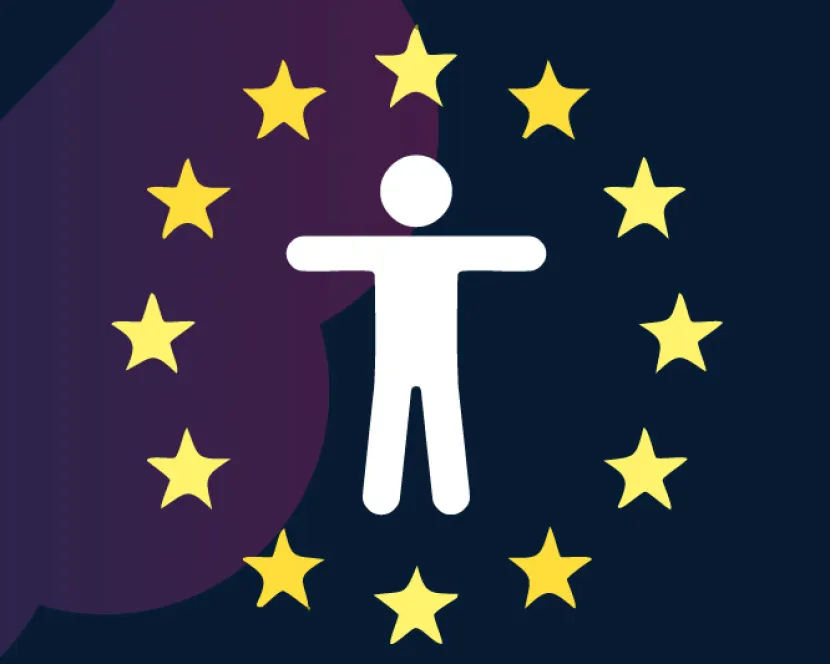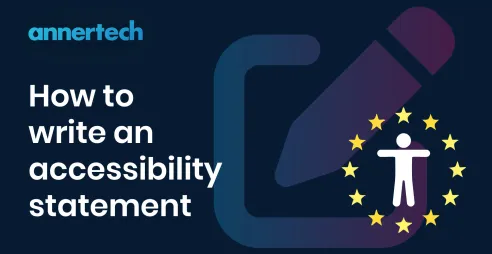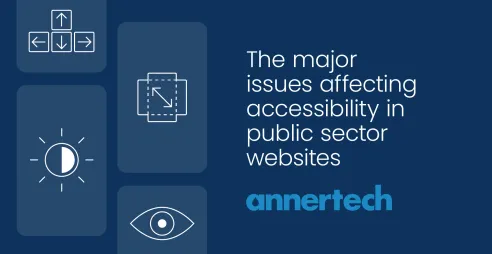When did you last update your accessibility statement?

An accessibility statement isn’t just necessary for compliance reasons. It actually has many advantages. Our accessibility specialist Tom Bamford takes a look.
An accessibility statement is an important part of any website. Its main purpose is to communicate what an organisation is doing to ensure that its website is accessible to all users.
An accessibility statement may also include the organisation’s policies and goals, as well as the website’s accessibility shortcomings and the steps that are being taken to address them. As these steps are taken, the accessibility statement should be updated to reflect it.
Accessibility is really important, and public sector websites and mobile apps have to be accessible by law. The UK’s Government Digital Service (GDS) is responsible for setting, leading and delivering the vision for a modern digital government, and it sets the standards for the public sector’s digital presence in the UK. Consistent monitoring is important to maintain high standards, and the GDS does this regularly.
Its latest monitoring exercise, in which it monitored public sector websites and apps from 2022 to 2024, found that 85% of these websites and apps had an accessibility statement, but many had not been reviewed in 12 months, and had thus become out of date.
“It’s important that organisations check and update their statements to reflect changes to their websites or apps,” said Chris Heathcote, product manager for accessibility monitoring at GDS.
There is a legal requirement for websites, especially those operating in the public sector, to be compliant with legislation such as the Web Accessibility Directive and the European Accessibility Act.
Why is this important?
Up-to-date accessibility statements are important for websites for several reasons:
1. Legal compliance
Many countries have laws and regulations that require websites to be accessible to people with disabilities. For example, in the EU, we have the European Accessibility Act (coming into effect later this month) and the Web Accessibility Directive, which has been in force for a few years now. An accessibility statement helps demonstrate compliance with these legal requirements, reducing the risk of legal action.
2. Inclusivity and equal access
An up-to-date accessibility statement reflects a commitment to making the web a more inclusive space for everyone, regardless of their physical abilities. It helps ensure that people with disabilities have the same access to information and services as others, which is fundamental for equality and fairness.
3. Transparency
The accessibility statement shows the public what measures have been taken to ensure that a website is accessible, and what tools or accommodations are available.
Existing barriers to access and known issues are also identified in the statement. This not only provides certain users with advanced warning, but also sets out alternative ways in which they can request the information they need.
This transparency builds trust with users, particularly those who may rely on assistive technologies like screen readers or voice navigation.
4. User experience
For people with disabilities, a website that is well-maintained in terms of accessibility provides a better user experience. This includes making sure that features such as text resizing, alternative text for images, and keyboard navigation are available and functioning correctly.
5. Ongoing improvements
An up-to-date statement can include a section on ongoing or future improvements to accessibility, showing users that the website is continuously striving to enhance its usability for people with disabilities.
6. SEO and search engine ranking
Search engines increasingly prioritise user experience, and websites that are more accessible tend to be more user-friendly overall. This can improve search engine optimisation (SEO) rankings and make the website more discoverable.
7. Avoiding negative publicity
If a website is found to be inaccessible and fails to have an up-to-date statement or fails to address these issues, it can result in negative publicity, complaints from users, or even social media backlash.
Dominos’ Pizza in the US was one of the first and biggest accessibility cases – the lawsuit went all the way to the US Supreme Court and resulted in extensive reputation damage. Domino’s was seen as hostile to disabled users, tarnishing its image among a broad audience concerned with corporate social responsibility.
By maintaining an up-to-date accessibility statement, a company demonstrates it takes its commitment to accessibility seriously, and is working towards fixing any issues that would exclude disabled users.
Conclusion
In the fast-paced world of digital content, relevance and accuracy aren't just best practices, they're essential.
An up-to-date accessibility statement isn’t just a box to check; it’s a reflection of an organisation’s commitment to inclusivity, transparency, and continuous improvement.
Regularly reviewing and updating your accessibility statement ensures you remain compliant with current laws and standards, such as the WCAG guidelines. More importantly, it builds trust with your users – especially those with disabilities – by demonstrating that you take their experience seriously.
Ethically, it's the right thing to do. From a business standpoint, it's also smart: inclusivity broadens your audience, protects your brand reputation, and supports SEO and customer retention efforts. In short, keeping your accessibility statement current is not just about meeting requirements, it's about showing you care.
And in today’s digital landscape, that can make all the difference.

Is your website’s accessibility statement up to date?
As a website grows, and more content is added, accessibility may be affected. Our accessibility team will not only do a thorough audit of your website but also advise on remedial actions to ensure that you’re not only compliant but offering the best possible experience for all your users.
Contact us


